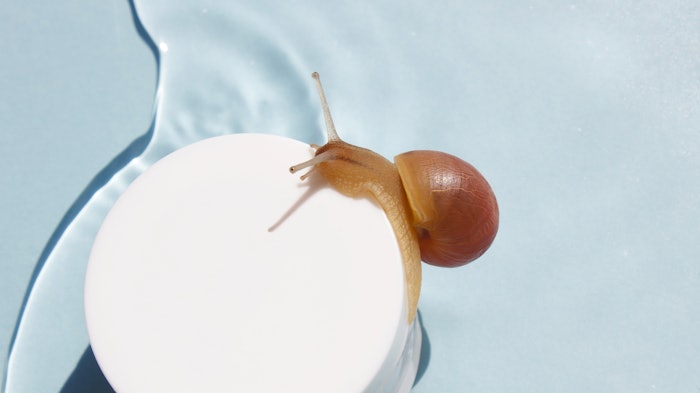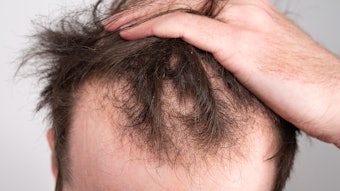
Snail mucin or slime has been the beauty industry's star for several years, thanks to its known hydrating, plumping and skin-smoothing benefits, among others. In 2018, the market for snail beauty products was projected to grow at a CAGR of 10.82% between 2017 and 2025, and in February 2024, Spate reported snail mucin was one of the top two skin care trends, growing more than 300% year-over-year. Notably, the material also has been used as a strong biomedical adhesive, to heal wounds, and even to assist anti-cancer treatments.
Toward Cruelty-free Snail Mucin
However, creating this material can stress the animals even when reputable producers use practices to minimize their discomfort. This is one reason why Marie Wei, a senior in molecular biology at Johns Hopkins' Krieger School, and Cecelia Zhang, a biomedical engineering senior at the Whiting School, aim to synthetically produce what they consider as the key protein in snail mucus, epiphragmin, according to a university report.
Underlying Structure, Mechanisms of Snail Mucin?
The duo has been working on their "AminoArtisans" project since 2022, with initial funding through the AgaraBio community lab and a grant from the Whiting School of Engineering's Student Initiatives Fund. “Researchers have been putting raw mucus into cancer cells and seeing them metastasize slower,” Wei said in the report, "but they’ve never actually understood what’s happening on a molecular level."
Per Wei, there is little research to explain why snail mucin works. A recent paper, "Snail mucus: Unlocking a natural powerhouse for dermatological innovation," published in December 2024, could elucidate answers, although no abstract was readily available to provide details. (Editor's note: C&T has reached out for more information. Stay tuned for updates.)
A paper in December 2021 described a study wherein human NHDF fibroblast cells were exposed to snail slime at two different concentrations, and the biological activity of the cells was assessed via mitochondrial redox. Analysis of the mucus sample also was carried out using infrared spectroscopy.
The authors found:
- the snail mucin contained mucin, achacin, mitomycin and allantoin, among other compounds; and
- the snail mucin positively affected the viability of fibroblasts, although the mechanisms for such was not clear.
Discovering these underlying mechanisms is one aspiration of Wei's and Zhang's research.
Streamlining Production for Beauty and More
According to Johns Hopkins, once Wei and Zhang understand the molecular mechanisms, the researchers hope to engineer epiphragmin through a synthetic process, which will streamline its production.
Then, they expect to make it available to skin care manufacturers and for medical drug research. They also plan to engineer it to be a stronger, more useful substance; e.g., enhancing certain features through protein mutagenesis or gene mutation to make it more adhesive, or to target specific cancer cells.
Stay tuned as we keep an eye on this development.










